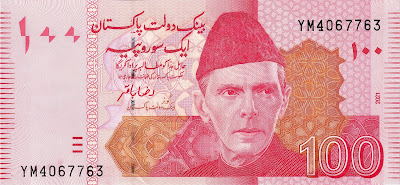Yugoslavia, a former federation of six republics in the Balkans, offers a rich tapestry of history and culture through its postage stamps. This article delves into the history of Yugoslavian stamps, their origins, and their value in the collectors' market today.
Historical Overview
Yugoslavia's philatelic history is a reflection of its complex political landscape. The country, which existed in various forms from 1918 to 2003, underwent significant transformations that are mirrored in its stamps.
1. Kingdom of Serbs, Croats, and Slovenes (1918-1929)
- The first stamps of the newly formed kingdom, established in 1918 after World War I, were overprints on existing stamps of Serbia, Croatia, and Slovenia. These overprints read "Država SHS" (State of Serbs, Croats, and Slovenes).
- In 1921, the kingdom issued its first original stamps featuring King Peter I and later King Alexander I.
2. Kingdom of Yugoslavia (1929-1941)
- The name changed to the Kingdom of Yugoslavia in 1929. Stamps from this period often depicted royal figures and national symbols, emphasizing the unity of the diverse ethnic groups within the kingdom.
3. World War II and Axis Occupation (1941-1945)
- During World War II, Yugoslavia was occupied by Axis powers. Different regions issued their own stamps, including German and Italian occupations, as well as puppet states like the Independent State of Croatia.
4. Socialist Federal Republic of Yugoslavia (1945-1992)
- After the war, Yugoslavia became a socialist republic under Josip Broz Tito. Stamps from this period reflect socialist themes, including workers, soldiers, and Tito himself.
- The post-war issues also celebrated industrial achievements, national unity, and international solidarity, with many stamps featuring vibrant, propaganda-style artwork.
5. Breakup of Yugoslavia (1991-2003)
- The breakup of Yugoslavia in the early 1990s led to the emergence of independent postal administrations in the successor states (Bosnia and Herzegovina, Croatia, Macedonia, Montenegro, Serbia, and Slovenia).
- Stamps from this tumultuous period are varied, reflecting the rapid political changes and conflicts, especially in Bosnia and Herzegovina.
Notable Issues and Their Features
Yugoslavian stamps are known for their diverse themes and artistic quality. Some notable issues include:
- The 1921 Definitive Series: Featuring King Peter I, these were the first original stamps of the Kingdom of Serbs, Croats, and Slovenes.
- The 1934 King Alexander I Mourning Issue: Released after the assassination of King Alexander I, these stamps are black-bordered and highly collectible.
- Tito-era Propaganda Stamps: Stamps from the socialist era often featured strong political messages and celebrated Tito’s leadership, industrialization, and Yugoslav unity.
Collectors' Market Value
The value of Yugoslavian stamps in the collectors' market today varies significantly based on several factors:
1. Rarity: Stamps from the early years of the Kingdom of Serbs, Croats, and Slovenes, as well as those from the Axis occupation period, are particularly rare and valuable.
2. Condition: As with all philatelic items, mint condition stamps (those that have not been used and retain their original gum) are more valuable than used ones.
3. Historical Significance: Stamps marking significant historical events, such as the assassination of King Alexander I or the Tito era’s major industrial milestones, are highly sought after.
4. Errors and Varieties: Stamps with printing errors or unique varieties can fetch high prices. Overprints and misprints from the turbulent wartime and immediate post-war periods are especially prized.
Notable Yugoslavian Stamps
- 1918 Overprints: The first stamps of the new kingdom, these overprints on existing stamps from Serbia, Croatia, and Slovenia are rare and valuable.
- 1934 King Alexander I Mourning Issue: These stamps, issued after the king’s assassination, are significant for their historical context and scarcity.
- 1944 Partisan Issues: Stamps issued by the Partisan resistance during World War II are rare and highly collectible due to their association with the liberation struggle.
- Tito Propaganda Stamps (1950s-1970s): These colorful and ideologically driven stamps are popular for their design and historical significance.
The stamps of Yugoslavia provide a fascinating lens through which to view the region’s complex history. From the formation of the Kingdom of Serbs, Croats, and Slovenes to the socialist era under Tito and the eventual breakup of the country, each stamp tells a story of political change and cultural evolution. For collectors, Yugoslavian stamps offer a rich field of study and a chance to own a piece of history. Their value in the collectors' market continues to be strong, driven by their historical significance, rarity, and the captivating narratives they encapsulate. Whether you are a seasoned philatelist or a newcomer, the stamps of Yugoslavia represent a rewarding and intriguing aspect of philatelic heritage.


.jpg)
.jpg)
.jpg)
.jpg)
.jpg)

.jpg)
No hay comentarios:
Publicar un comentario